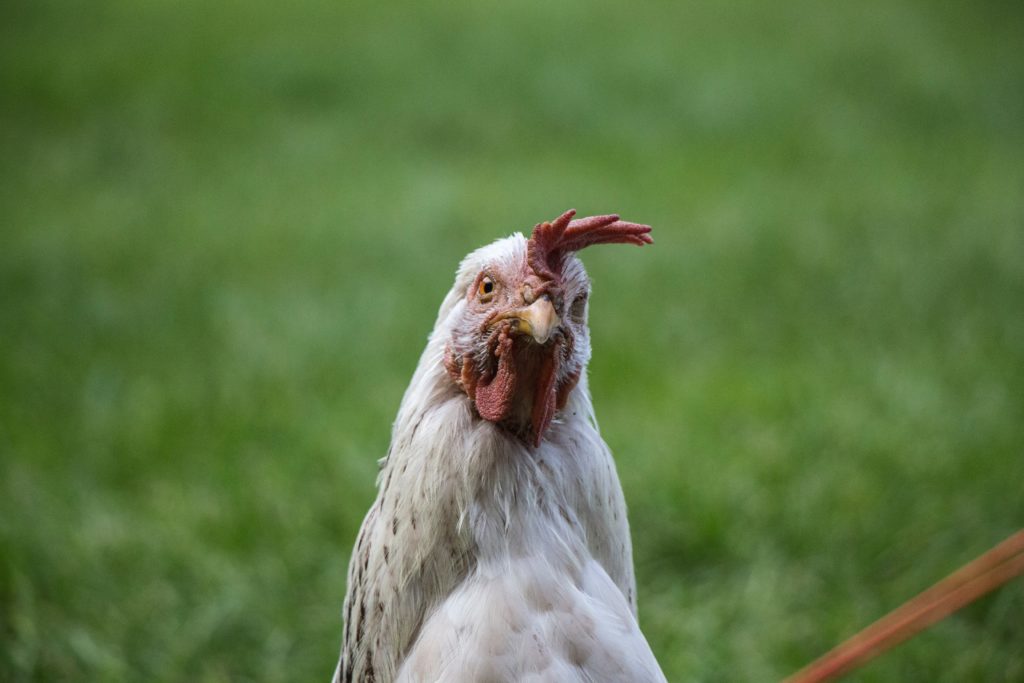What is a lash egg?

A particularly nasty surprise to find in a chicken coop, a lash egg is an egg-shaped mass of tissue, pus and yolk-like material. Expelled by a chicken (in the same manner as an egg), it’s typically a symptom of a bacterial infection, and it has caught many chicken owners by surprise.
“It’s not uncommon to have this happen,” said Anne Lichtenwalner, Director of the University of Maine Veterinary Diagnostic Laboratory. “I’ve seen a lot of cases of this over the years.”
The specific cause of a lash egg is coliform salpingitis, which is inflammation of the oviduct and uterus of a bird due to a bacterial infection. This condition also involves adhesions occurring inside the abdomen, causing egg-like material to accumulate in the oviduct.
A lash egg is the expulsion of some of this material and, because it travels through the bird’s oviduct, comes out in the general shape of an egg.
But it’s not an egg.
“When they’re cut open, they reveal layers of tissue and other material,” wrote Pam Freeman in her 2017 book Backyard Chickens Beyond the Basics. “They have been described as having a rubbery feel, with the insides being the consistency of cooked yolks and having a cheesy look.”
“I think people understand it’s not a good thing, but I don’t think they understand necessarily how negative of a thing it is,” said Scott DeMoranville, an experienced poultry owner and educator and the founder of Maine Poultry Connection Facebook group.
Coliform salpingitis is one of the most common causes of mortality in commercial layer and breeder chickens, according to the book Diseases of Poultry published by Wiley-Blackwell, a widely used reference for veterinarians and poultry owners. In addition to chickens, other female birds, especially ducks and geese, can fall victim to this affliction.
A lash egg, however, is not necessarily a death sentence. While a chicken can die from this infection, it can also fight it off and go on to live a long life, though it may be less productive or stop producing eggs entirely.
“Sometimes a bird is able to keep it really confined to an egg-like form and passes it,” Lichtenwalner said, “but many times, the inflammation is widespread in the oviduct.”

What causes it?
Coliform salpingitis is often caused by bacteria, which can be picked up easily by hens when they’re in the act of laying eggs. However, this isn’t always the case, according to Lichtenwalner. Stressors such as poor ventilation, respiratory diseases and overcrowding in a coop may contribute to the illness.
“It’s not contagious. It’s not going directly from bird to bird,” Lichtenwalner said, “but it’s often being concentrated in the environment because the environment isn’t maintained the way it should be.”
“There are some contagious diseases of birds that cause changes in how birds lay their eggs or may cause them to have runny or bloody eggs, but they’re eggs nonetheless,” she said.“That’s very different than this.”
How to prevent it
Keeping nesting boxes and coops clean and free of fecal matter is one way to guard against the illness, Lichtenwalner said.
“I personally like using shavings [in nesting boxes] because it’s easy to replace them and put cleans ones on top if you don’t want to clean nests out every day,” Lichtenwalner said.
To collect eggs, Lichtenwalner wears dishwashing gloves. With one hand, she collects the eggs and disposes of dirty shavings, and with the other hand, she deposits clean shavings on the nest. She also makes sure to clean the gloves regularly.
In addition, Lichtenwalner said that it’s important to expose your hens to nesting boxes early in life before they start laying eggs, so they actually use the nesting boxes when they do start to lay.
Other preventative measures include feeding your chickens healthy food, allowing them plenty of movement and exercise and reducing stressors whenever possible.
“It’s not all husbandry, but good husbandry can, of course, minimize the opportunity for it,” DeMoranville said.
Can it be treated?
Coliform salpingitis can be treated with antibiotics, however, when a lash egg is found, it’s often difficult to tell which chicken in a flock produced it.
“Chickens are magical at hiding illness,” DeMoranville said. “I think what happens a lot of times is that people don’t even realize the bird is ill, myself included.”
Sometimes the infection can be detected by picking up the bird and feeling its abdomen, Lichtenwalner said.
In a bulletin Lichtenwalner wrote about coliform salpingitis for the University of Maine Cooperative Extension, she explains that in a healthy chicken’s abdomen, “you might be able to feel an egg in the oviduct, but it should not feel bulging, hard, or watery.”
If you do think you know which bird is infected and want to treat it with antibiotics, Lichtenwalner said you’ll have to take it to a veterinarian for treatment. As of January 2017, stricter federal rules have put a stop to the sale of over-the-counter antibiotics for chickens and other animals that are produced for consumption.
“The veterinarian can give the farmer good up-to-date information about how to use the drug and how long to wait until you can eat the eggs or meat again,” Lichtenwalner said.
Many chicken owners who find lash eggs simply wait to see if the afflicted chicken can fight off the illness on their own — which is sometimes possible if the bird has a strong immune system.
In addition, cleaning the coop and nesting boxes, supplying the flock with fresh food and water and reducing stressors can have a positive impact on the chicken’s overall health and may help it recover.
It’s homesteading skills month on Hello Homestead! Every weekday this month, we’ll be highlighting a skill for living a self-sufficient life. Make sure you LIKE our page on Facebook, FOLLOW on Twitter, FOLLOW us on Instagram and/or sign up for our newsletter so you don’t miss a single one!
